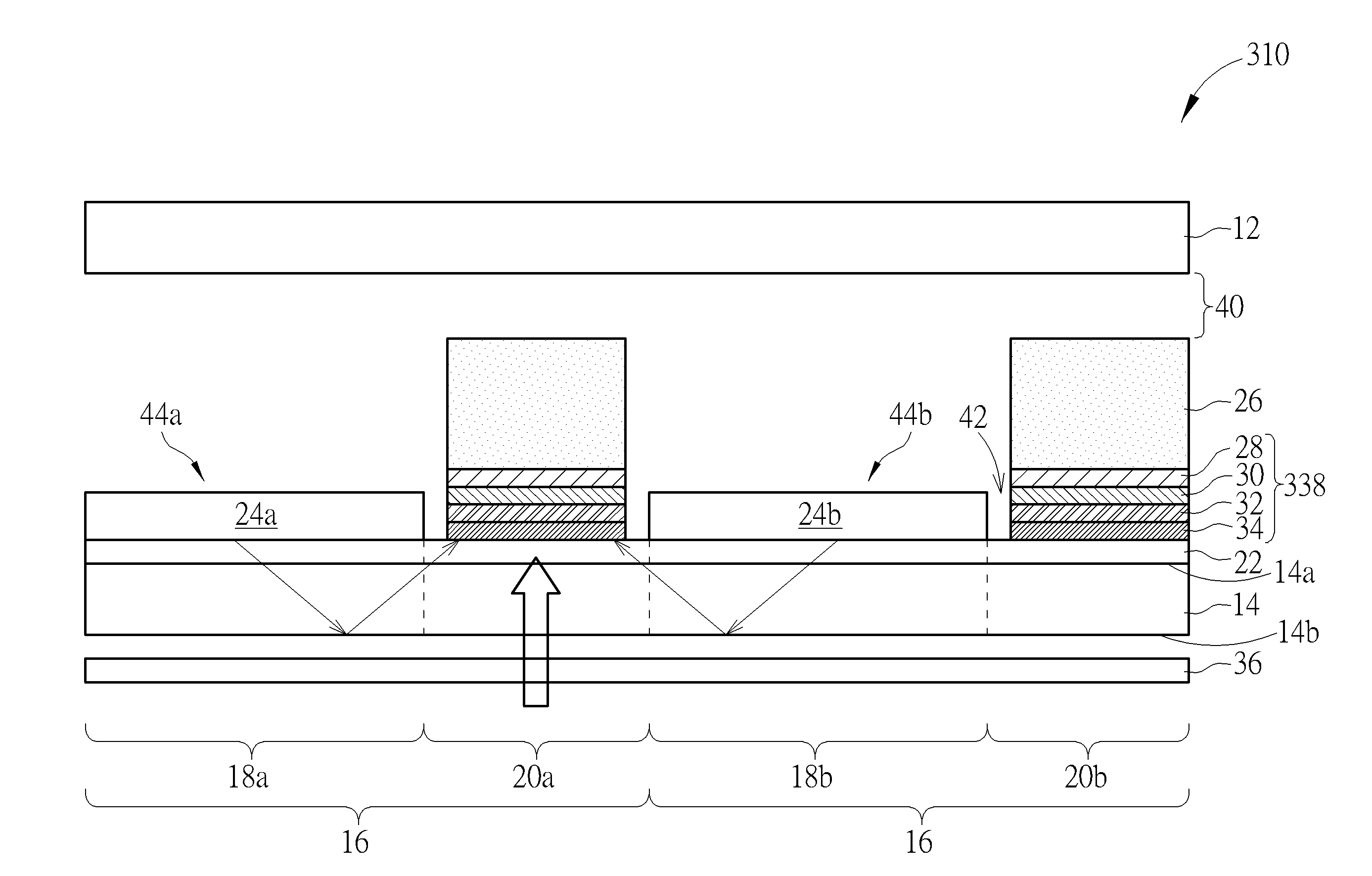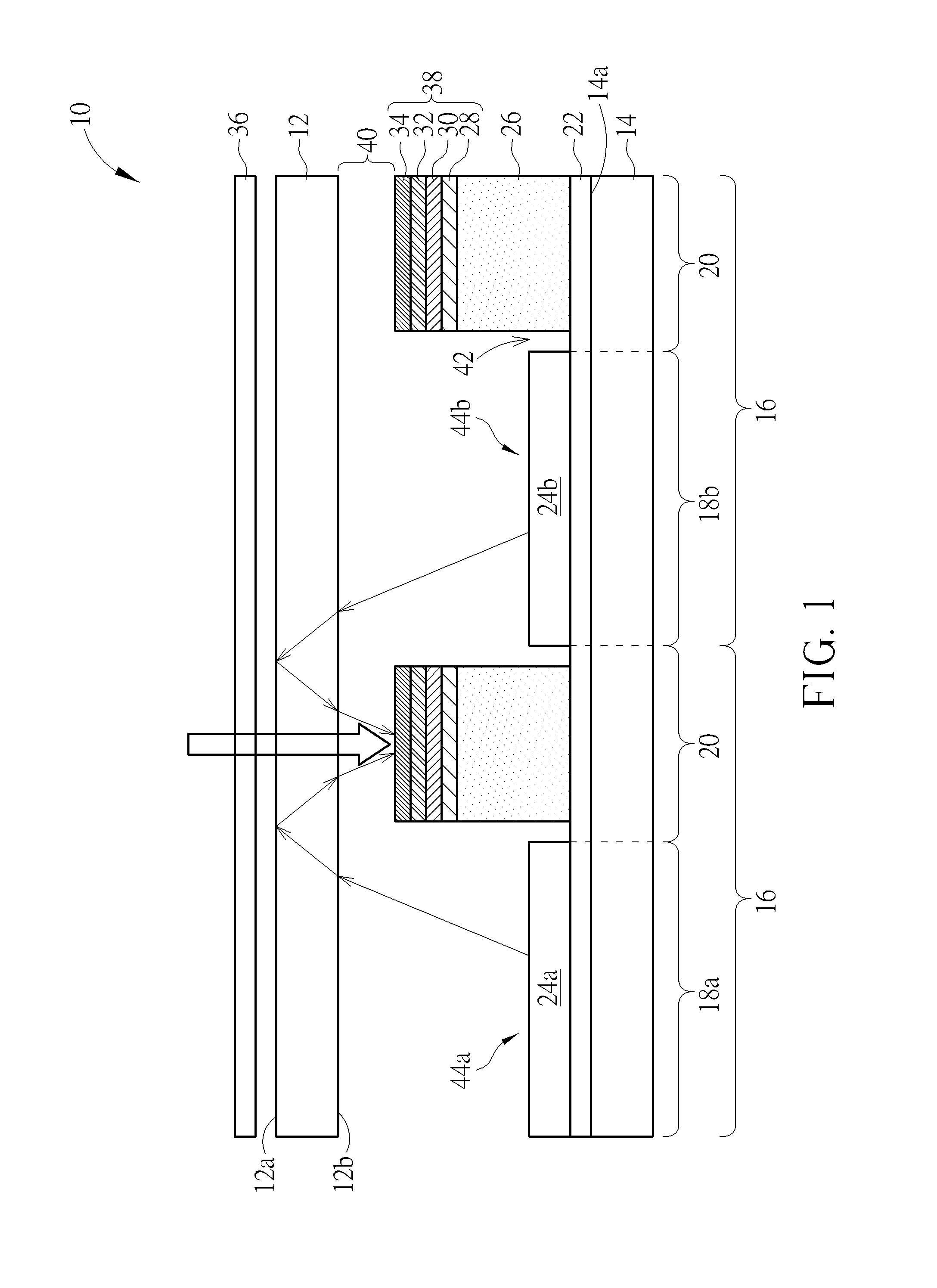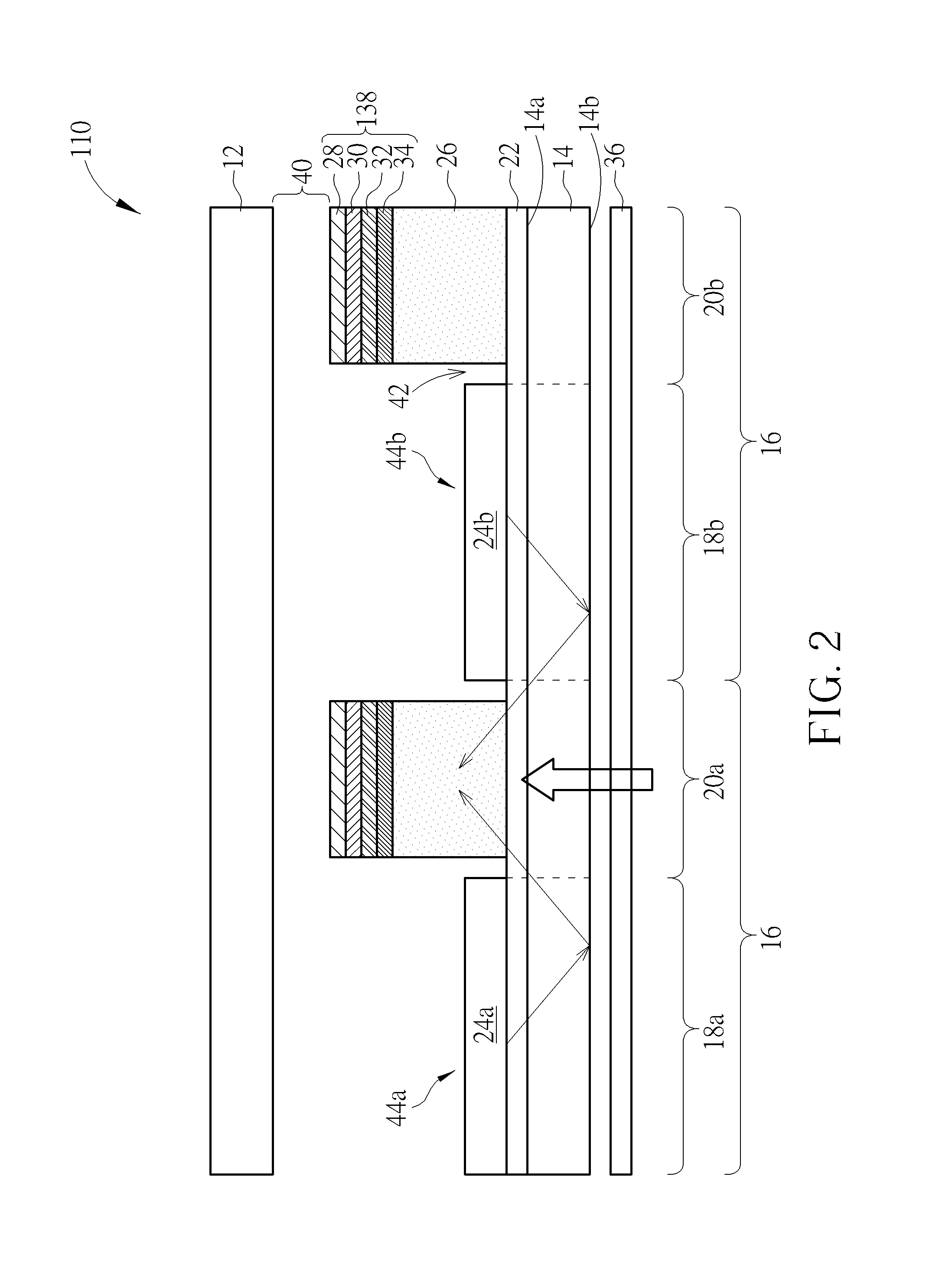Organic light-emitting display with solar cell
a solar cell and light-emitting display technology, applied in the direction of thermoelectric device junction materials, electrical apparatus, semiconductor devices, etc., can solve the problems of limited emission efficiency and energy waste of conventional organic light-emitting display, and achieve the effect of saving the whole and avoiding energy was
- Summary
- Abstract
- Description
- Claims
- Application Information
AI Technical Summary
Benefits of technology
Problems solved by technology
Method used
Image
Examples
first embodiment
[0013]Referring to FIG. 1, FIG. 1 is a schematic sectional-view of an organic light-emitting display with solar cell according to the present invention. The organic light-emitting display 10 with solar cell of the present invention includes a first substrate 12 and a second substrate 14, wherein the second substrate 14 and the first substrate 12 are disposed oppositely. As shown in FIG. 1, the second substrate 14 is disposed at a bottom side of the first substrate 12 and the second substrate 14 has an inside surface 14a facing the bottom surface of the first substrate 12, which is the inside surface 12b of the first substrate 12. The second substrate 14 includes a plurality of pixels 16 defined thereon, wherein the pixels 16 are arranged as an array. The pixels 16 used herein may also refer to the sub-pixels used to produce any primary color lights or any other color lights for composing display images, but not limited thereto. Each pixel 16 includes an emission region (marked as 18...
second embodiment
[0019]Referring to FIG. 2, FIG. 2 is a schematic sectional-view of an organic light-emitting display with solar cell according to the present invention. Different from the previous embodiment, the organic light-emitting display 110 of this embodiment is a bottom emission type active organic light-emitting display, thus the outside surface 14b of the second substrate 14 is the light emitting side of the organic light-emitting display 110 for displaying images. Furthermore, the arranging order of the multiple film layers of the solar cell units 138 of this embodiment is different from the previous embodiment. On the surface of the bank 26, the second electrode layer 34, the transport layer 32, the absorption layer 30 and the first electrode layer 28 are disposed in order from bottom to top, which means the second electrode layer 34, the transport layer 32, the absorption layer 30 and the first electrode layer 28 are disposed in order from a side near the second substrate 14 to a side ...
PUM
 Login to View More
Login to View More Abstract
Description
Claims
Application Information
 Login to View More
Login to View More - R&D
- Intellectual Property
- Life Sciences
- Materials
- Tech Scout
- Unparalleled Data Quality
- Higher Quality Content
- 60% Fewer Hallucinations
Browse by: Latest US Patents, China's latest patents, Technical Efficacy Thesaurus, Application Domain, Technology Topic, Popular Technical Reports.
© 2025 PatSnap. All rights reserved.Legal|Privacy policy|Modern Slavery Act Transparency Statement|Sitemap|About US| Contact US: help@patsnap.com



